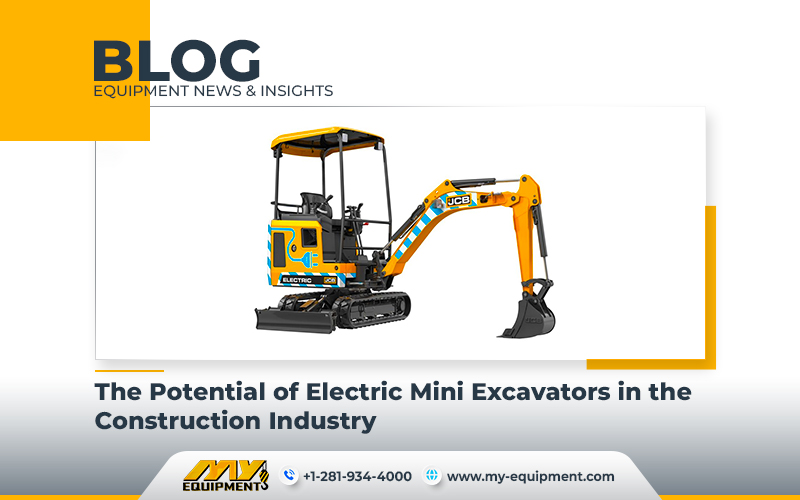Electric machinery sales in the construction equipment market have been relatively low compared to diesel-powered equipment. However, IDTechEx predicts a significant market growth for electric construction equipment in the coming decade, with a projected Compound Annual Growth Rate (CAGR) of 37%. Mini excavators, due to their compact size and versatility, represent a substantial portion of the construction equipment market. IDTechEx provides three key justifications for considering electric mini excavators as a viable choice over diesel counterparts. However, it is important to carefully evaluate the potential challenges associated with electric mini excavators.
Equivalent or Even Better Performance
Electric mini excavators offer comparable or even superior power when compared to diesel versions. For instance, the JCB19C-IE electric model demonstrates a 20kW peak output, which is nearly double the 11.7kW of its diesel equivalent and approximately 33% higher than other diesel instances in IDTechEx’s database. Plus, electric mini excavators can operate continuously for 6 to 8 hours, providing sufficient working time for most operators.
Better Working Conditions
The absence of exhaust emissions is quite a notable advantage of electric mini excavators. Traditional excavators can lead to poor air quality for operators and nearby workers due to open cabins and stationary vehicles. In contrast, zero-emission electric machinery enhances air quality, contributing to improved working conditions and the overall quality of life for construction employees.
Cost Benefits
Electric equipment offers a potential reduction in the total cost of ownership compared to diesel-powered counterparts. While the cost of batteries remains a factor, it has been decreasing, with manufacturers like John Deere, Caterpillar, and XCMG increasingly producing electric products in larger volumes. IDTechEx predicts that an electric mini excavator buyer could recoup their investment within six to eight years, benefiting from reduced fuel consumption, maintenance costs, and increased overall efficiency.
Challenges of Electric Mini Excavators
Battery Cost and Market Trends
Although battery costs have historically been decreasing, recent trends indicate potential price increases. Bloomberg NEF’s 2022 Lithium-Ion Battery Survey revealed a 7% rise in costs compared to the previous year, despite a previous downward trend. Rising input costs and increased demand from the expanding electric vehicle industry may impact future battery prices.
Performance Comparison and Breakout Force
While electric mini excavators may exhibit similar performance levels to diesel machines, the maximal power output may not directly translate to higher breakout force. Breakout force plays a crucial role in evaluating a machine’s effectiveness. Further analysis is required to determine how electric mini excavators compare in terms of breakout force.
Operating Duration in Low-Temperature Environments
The ability of electric mini excavators to function continuously for 6 to 8 hours on a full charge may be impacted by low-temperature environments. Low temperatures can reduce the running time by approximately 10% to 20%, presenting a challenge in certain operating conditions. Building OEMs currently do not extensively cover the impact of low temperatures on electric vehicles in their documentation.
Charging Infrastructure
While overnight charging at a depot is feasible for single-day projects, multi-day construction sites without grid connections may require alternative charging options. Dependency on diesel generators for charging could limit the practicality of electric mini excavators in such scenarios. However, some electric mini excavators offer tethering options, allowing for continuous operation in confined spaces, and most machines can be charged within an hour, enabling recharging during lunch breaks or overnight.
There is no doubt that the rise of electric mini excavators in the construction industry shows promise, supported by their equivalent or even superior performance, improved working conditions, and potential cost benefits. However, challenges related to battery costs, performance comparison, operating duration in low-temperature environments, and charging infrastructure need to be carefully considered. Further research and development are required to address these challenges properly and maximize the potential of electric mini excavators in the construction sector.


 1400 Broadfield Blvd, Houston, TX 77084,
USA.
1400 Broadfield Blvd, Houston, TX 77084,
USA. omer@my-equipment.com
omer@my-equipment.com